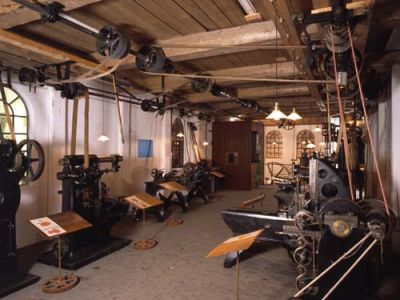
Frydenlund Brewery . Photo: The Norwegian Museum of Science and Technology / Unknown photographer
EXPORT OF BEER FROM THE 1860s
– enabling technologies
By Ingebjørg Eidhammer , Conservator at The Norwegian Museum of Science and Technology and research fellow at the Department of Historical and Classical Studies, NTNU
The research project is about enabling technologies for the export of beer from the 1860s-1900s. The most important source for this project is the historical archive of Ringnes Bryggeri. The archive also contains material from the Frydenlund and Schous brewery, as well as several other breweries in Oslo. It was fully arranged and available in January 2018. In the archive there are several sources that show that Frydenlund, Schous and Ringnes carried out extensive beer exports to the whole world.
New infrastructure and communication enabled faster distribution of goods to customers, both domestically and abroad. Steamships and railways are examples of enabling technology that opened up exports to markets that had not previously been within reach.
Beer was a sought after commodity in many countries and the breweries in Norway had good conditions for export business since the nation had a large trading fleet with contacts all over the world. The breweries could send product samples of beer by regular ship to various ports to probe the market. The captains of the ships were willing to do this since they knew that in the next instance they could get the task of transporting the export goods.
In the period 1860-1900, Norwegian beer was exported to all parts of the world. At that time, the breweries in Norway had an advantage over breweries in warmer countries, since Norway had a rich supply of natural ice. It was used both for cooling in beer production and to keep the beer cold over long transport stages.
Industrialization in Norway in the middle of the 19th century would not have been possible without what today can be referred to as enabling technologies. Enabling technologies are technologies that prove to be so significant that they have major political, societal and economic consequences. They also provide a basis for the development of other technologies.
Historical examples are the railway and steam engines, and from around 1860 new science-based technologies such as microbiology, chemistry and electricity came. The new enabling technologies also affected the brewing industry and the era is considered the modern breakthrough for Norwegian beer production.
From the 1860s until the 1900s, a number of technological and scientific innovations were introduced which influenced the quality of beer to become more durable and standardized, for example pasteurisation, developments in microbiology and mechanical cooling machines. The new science-based industry provided opportunities to mass-produce products that could be sold all over the world.
In the 1860s, there were still some unresolved problems related to the mass production of beer. The science of pasteurization and cleaning yeast had not yet been established. An important factor in the industrial mass production and export of beer was that the beer had to meet certain standards and that it had to be recognisable; that is, the beer always tasted the same. Based on Louis Pasteur's yeast research, Emil Chr. Hansen at the Carlsberg laboratory found that the yeast they used could contain a kind of "wild yeast" which could make the beer sour, and which led to great variation in the taste between different brews of the same type of beer. In 1885, Hansen developed a new method for purifying the yeast, so that this factor became constant. This made it possible to mass produce a standardized beer.
The export business was established in parallel with what we refer to as the modern breakthrough for Norwegian beer production. Abroad, we see that the export of beer made up a significant part of, among other things, the German, English and Dutch brewery market. For the Norwegian breweries, export became part of the premise for an active investment in establishing and expanding the market. This doctoral work will therefore provide more knowledge about the enabling technologies that helped both to establish the export industry and to develop a new and standardized brewing production.
Sources
https://www.oecd.org/industry/C-MIN-2017-5-EN.pdf p. 4, Accessed: 08.11.19
Report. St. 7 (2014–2015): Long-term plan for research and higher education 2015–2024, "Enabling technologies", The Royal Ministry of Knowledge, Oslo 2014: 30-33
Misa, Thomas. Leonardo to the Internet: Technology and Culture from the Renaissance to the Present. The Johns Hopkins University Press. Baltimore. 2004: 128-134
Petersen, Erling. Frydenlund's brewery 100 years, 1859-1959. Oslo 1959: 12-15
Hard, Mikael. Machines Are Frozen Spirit: The Scientification of Refrigeration and Brewing in the 19th Century: A Weberian Interpretation. Campus Verlag, Frankfurt am Main 1994: 41
Myklebust S. and C. Myrvang. "The commodity as a form of culture and bearer of power" in The Goods Take Power. Gyldendal Norsk Forlag AS 2001: 11-15
Wilson Richard and Terry Gourvish. The Dynamics of the International Brewing Industry Since 1800. Routledge. London 1998: 23
Unger, Richard. “Dutch Brewing in The Nineteenth Century” 2014 in The Dynamics of the International Brewing Industry Since 1800. Ed Richard George Wilson, Terry Gourvish, Routledge, London, 2014: 40-43












